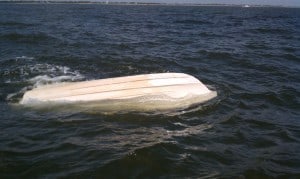Good morning to Captain and crew alike and welcome to the Admiralty Docket.

To answer a recent question as to whether speed is often a factor in boat collisions with today’s high powered runabouts: “Yes, excessive speed is a common contributing factor in recreational boat collisions,” although often the analysis of what “caused” a collision will find that multiple factors are to blame. While speed can be a major contributing factor, especially at night or with limited visibility, the most common causal factors cited in vessel collisions are alcohol and failure to keep a proper lookout
(Rule 5). Rule 6 of the Navigational Rules does, however, address Safe Speed.
Rule 6 provides: “Every vessel shall at all times proceed at safe speed so that she can take proper and effective action to avoid collision and be stopped within a distance appropriate to the prevailing circumstances and conditions. In determining a safe speed the following factors shall be among those taken into account by all vessels: the state of visibility, the traffic density including concentration of fishing vessels or any other vessels, the maneuverability of the vessel with special reference to stopping distance and turning ability in the prevailing conditions, at night the presence of background light such as from shore lights or from back scatter of her own lights, the state of wind, sea, and current, and the proximity of navigational hazards, and the draft in relation to the available depth of water.”
Rule 6 goes on to list additional factors to be considered by vessels with operational radar, including the characteristics, efficiency, and limitations of the radar equipment. Except for no wake zones In the vicinity of docks and marinas and except for harbor speed limits in certain congested channels, we do not have speed limits on the navigable waters and high seas like the speed limits posted on our highways. Because conditions of wind and wave, tide and current, and visibility vary as widely as stopping distances and maneuverability of vessels, nautical speed limits are seldom used. Rather than a set speed limit, Rule 6 of the Rules of the Road operates much like the familiar highway law which prohibits driving too fast for conditions. At night or with limited visibility, such as in a rain storm or foggy conditions, safe speeds will be much lower than those for the same vessel with good visibility. Experienced and prudent operators will adjust their vessel’s speed to adjust for the many variables that Mother Nature may provide on the water.
More next week on the Admiralty Docket. Until then, remember that your rights and responsibilities change as you approach the shore, and may God Almighty grant you pleasant sailing.

